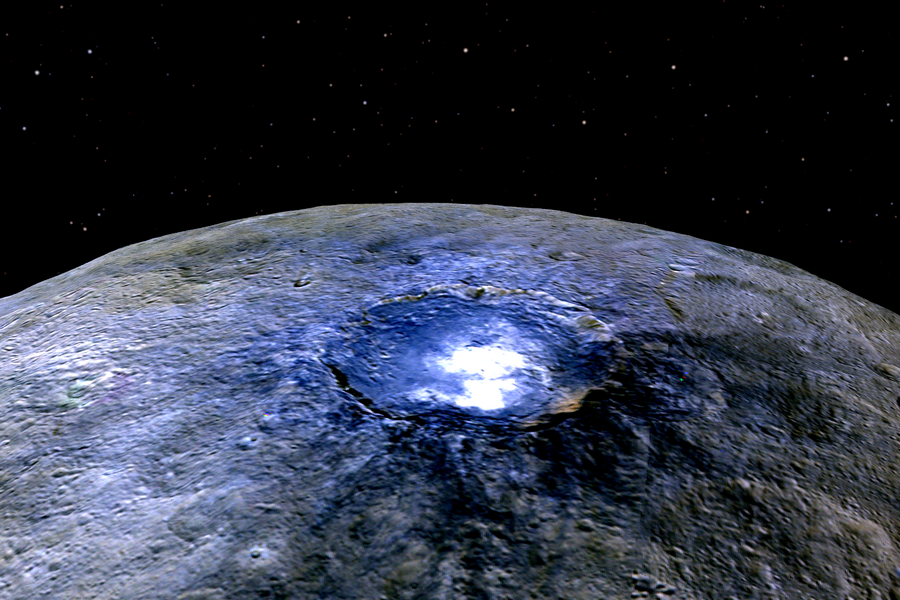What makes the dwarf planet Ceres glow? Scientists unravel the mystery.
Thanks to NASA’s Dawn spacecraft, scientists now say they understand the mysterious bright spots on the dwarf planet Ceres.
Dawn has been capturing glowing images of Ceres for almost a year.
But while experts have long identified more than 130 bright spots on Ceres, two new studies published in the journal Nature this week provide an explanation. In one study, scientists attribute the glowing craters to a kind of salt, and the other study challenges previous assumptions about Ceres’ creation based on the presence of ammonia-rich clays.
Lead author of the first study, Andreas Nathues at Max Planck Institute for Solar System Research in Germany, attributes the bright material to a type of magnesium sulfate called hexahydrite. Epsom salt, common on Earth, is a different kind of magnesium sulfate.
Dr. Nathues says it’s not a coincidence that the bright spots coincide with crater holes.
“The global nature of Ceres’ bright spots suggests that this world has a subsurface layer that contains briny water-ice,” Nathues explained in a NASA press release. In other words, the asteroid impacts unearthed a glowing mixture of ice and salt in a deeper layer of Ceres that was previously “left behind when water-ice sublimated in the past.”
Unless disrupted by an asteroid impact, the top surface of Ceres is dark. The study authors describe the surface as “similar in brightness to fresh asphalt,” with the 130 bright spots reflecting about 50 percent of sunlight in the area, thus standing in stark contrast.
The second study, led by Maria Cristina De Sanctis from the National Institute of Astrophysics in Rome, suggests evidence of ammonia-rich clays, which experts say is a game-changer for Ceres’ evolution.
“The presence of ammonia-bearing species suggests that Ceres is composed of material accreted in an environment where ammonia and nitrogen were abundant,” Dr. De Sanctis said in the NASA statement. “Consequently, we think that this material originated in the outer cold solar system.”
The presence of ammoniated compounds means that Ceres might not have originated in the asteroid belt between Mars and Jupiter, where it currently resides, because Ceres today is too warm to support ammonia ice. Instead, experts suggest Ceres might have formed in the outer solar system or just incorporated drifting materials from the outer solar system.
While some Dawn viewers hoped the glowing spots on Ceres would turn out to be a real-life Death Star of alien base, experts seem equally awed by the discovery of salt and clay.






